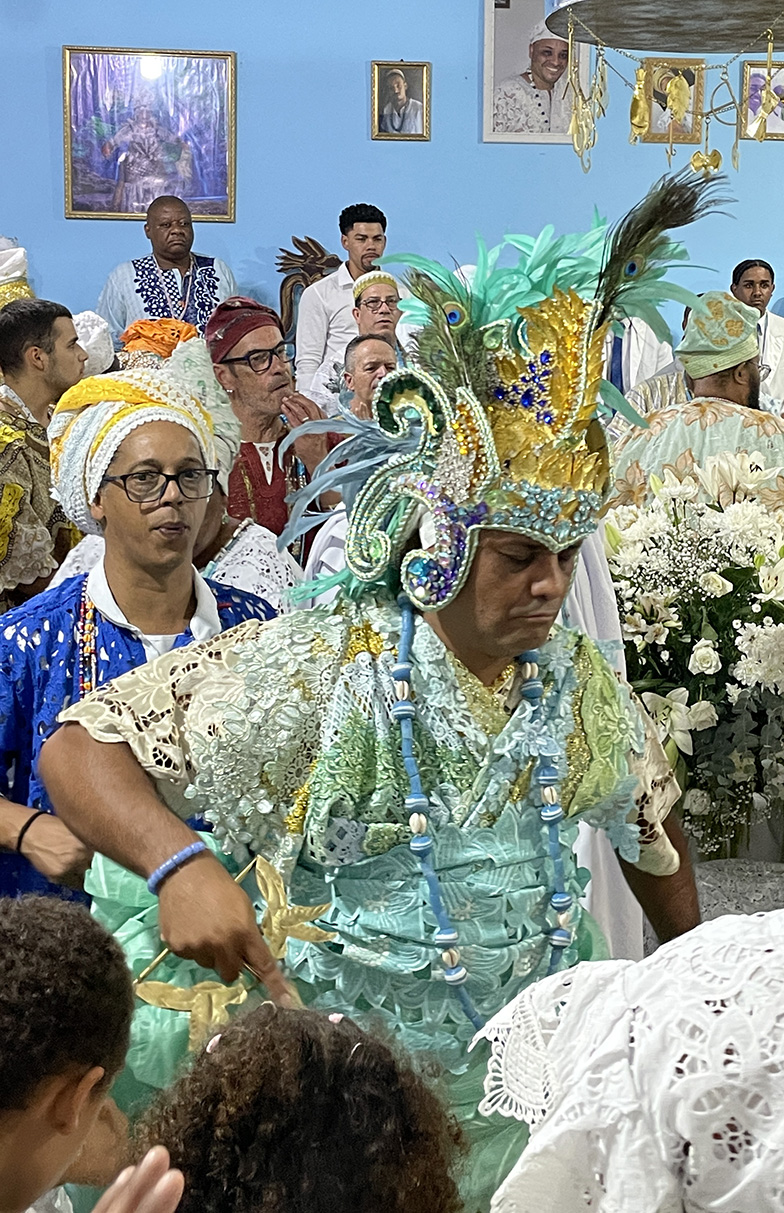Difference between revisions of "Template:POTD protected"
Occultwiki (talk | contribs) |
Occultwiki (talk | contribs) |
||
| Line 1: | Line 1: | ||
{| role="presentation" style="margin:0 3px 3px; width:100%; text-align:left; background-color:transparent; border-collapse: collapse; " | {| role="presentation" style="margin:0 3px 3px; width:100%; text-align:left; background-color:transparent; border-collapse: collapse; " | ||
|style="padding:0 0.9em 0 0;" | [[File: | |style="padding:0 0.9em 0 0;" | [[File:Oxira 1.jpg|300px|thumb|]] | ||
|style="padding:0 6px 0 0"| | |style="padding:0 6px 0 0"| | ||
'''[[Candomblé]]''' is an [[African diaspora religion]] that developed in Brazil during the 19th century. It arose through a process of syncretism between several of the traditional religions of West and Central Africa, especially those of the Yoruba, Bantu, and Gbe, coupled with influences from [[Christianity|Roman Catholicism]]. | |||
Candomblé revolves around spirits termed ''orixás'' (orishas) or ''santos'' ("[[saint]]s"). Believed to mediate between humanity and Olorun, the ''orixás'' have been varyingly conceived as ancestral figures, or embodiments of forces of nature. Each ''orixá'' equates with a Roman Catholic [[saint]]. In Candomblé altars, the ''orixás'' are often represented with images and statues of Roman Catholic saints. | |||
<p><small> | Although it is usually a dancer who becomes possessed, sometimes spectators will too. A possessed person is called a ''cavalo'' (horse); being possessed by the ''orixá'' is deemed a privilege. | ||
<p><small>Photographer: [[Travis McHenry]]</small></p> | |||
[[:Category:Images|'''(More Images)''']] | [[:Category:Images|'''(More Images)''']] | ||
<div class="potd-recent" style="text-align:right;"> | <div class="potd-recent" style="text-align:right;"> | ||
Revision as of 19:44, 10 December 2024
|
Candomblé is an African diaspora religion that developed in Brazil during the 19th century. It arose through a process of syncretism between several of the traditional religions of West and Central Africa, especially those of the Yoruba, Bantu, and Gbe, coupled with influences from Roman Catholicism. Candomblé revolves around spirits termed orixás (orishas) or santos ("saints"). Believed to mediate between humanity and Olorun, the orixás have been varyingly conceived as ancestral figures, or embodiments of forces of nature. Each orixá equates with a Roman Catholic saint. In Candomblé altars, the orixás are often represented with images and statues of Roman Catholic saints. Although it is usually a dancer who becomes possessed, sometimes spectators will too. A possessed person is called a cavalo (horse); being possessed by the orixá is deemed a privilege. Photographer: Travis McHenry |
